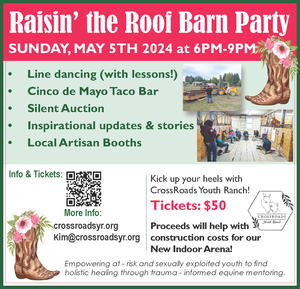Green field or home field?
May 17, 2023
It is a tough choice for the residents of our little town – the citizens of La Conner – to make. The community was given a gift, nearly, when Sybil and Tom Jenson sold the Town of La Conner a half-plus acre of property under Pioneer Park and west of Maple Avenue. Residents now have to discern, discuss and debate the best way to use that sliver of land. The top choices are keeping it as a green space – organized into a community garden, as some are advocating – or building starter homes for first time buyers. This could sprout into a tiny homes village.
A community garden grows more than plants, of course. There is more good done than just the effort of seeds planted in the ground. Its name, community, evokes people gathering in common purpose to enjoy shared experiences, to strengthen relationships, to relax and take refuge from the tumult of the day. And, what a joy to bask in being outside, in the sun and hear birdsong.
Then there is the harvest, food for the table, sharing again, saving on family budgets, shrinking carbon footprints, taking carbon dioxide from the atmosphere and adding oxygen to it.
There is the possibility of children. What is more iconic to small town living than kids in a garden?
Kids. Our future. So, the case for smaller, starter homes. La Conner is land locked. Sites for multi dwelling construction are few. Housing costs will remain high. It is expensive to live here. Capitalism thrives and La Conner invites it in rather than trying to be immune from it. Our population is aging. When homes sell, the folks who have funds to purchase are typically older.

Meanwhile enrollment in the school district declines. Workers staffing tourist businesses or boat manufacturing drive in from places they can afford to live. If teachers wanted to live here, they might not be able to fit it into their budgets.
La Conner residents live in a sweet spot community. It is sweeter, or materially easier, for those with more means. Our town is increasingly stratified and homogenized as it becomes a refuge for those who have made it financially to settle here.
A primary way to control the price of housing is to own the land. The Town owns a small property. It can dictate not only the land's use but the terms for living on it and the structure of ownership or leasing through contracting with a community housing agency. Much thought is needed to create a model of pricing that goes beyond the cost of construction.
Two visions, one small plot of land, a town of 900-plus residents and an elected council. This land use decision is in the council's hands, but its members are waiting and need to hear from residents, individually and collectively. There will be meetings. There is the telephone. Letters can be communicated, however delivered.
Residents need to speak up, advocate, debate and discern to shape a decision that will affect more or fewer of its residents as the future unfolds.
What do residents want to grow? Where are we going to be in the future, a time that in a sense we actually live in, and where children certainly will after people reading this pass on?







Reader Comments(0)